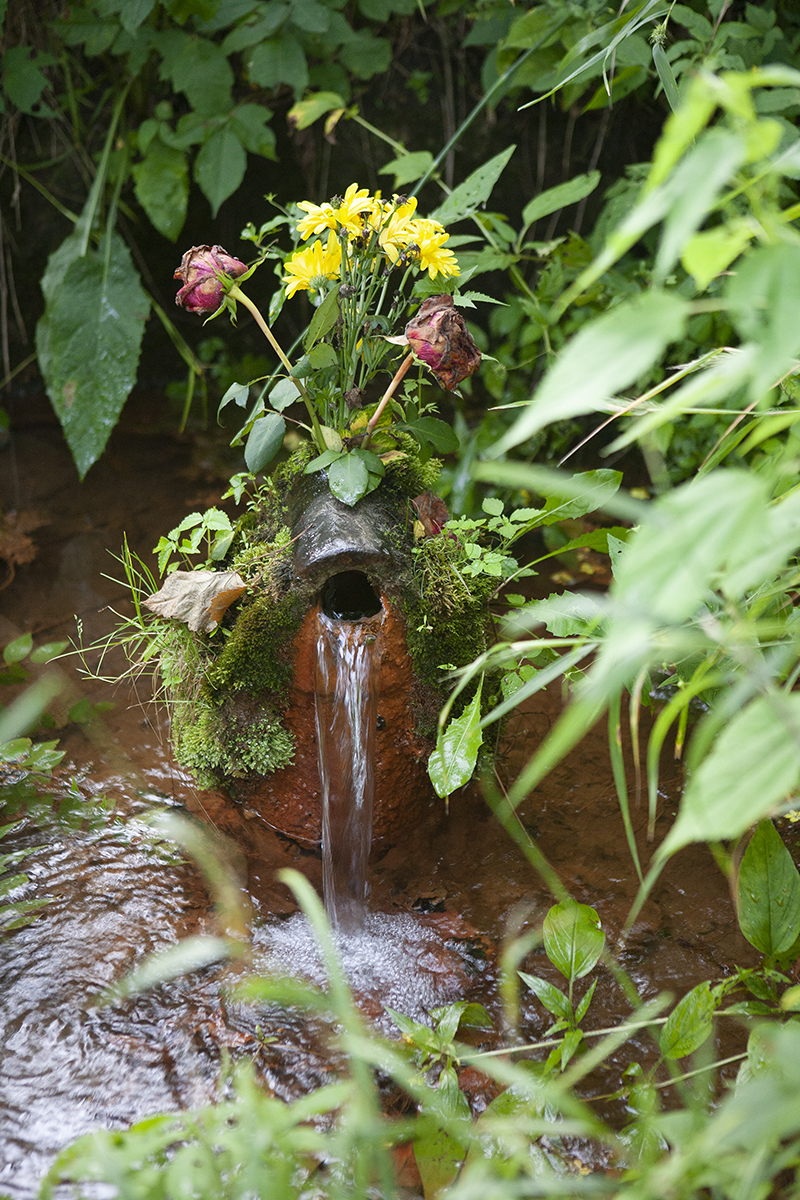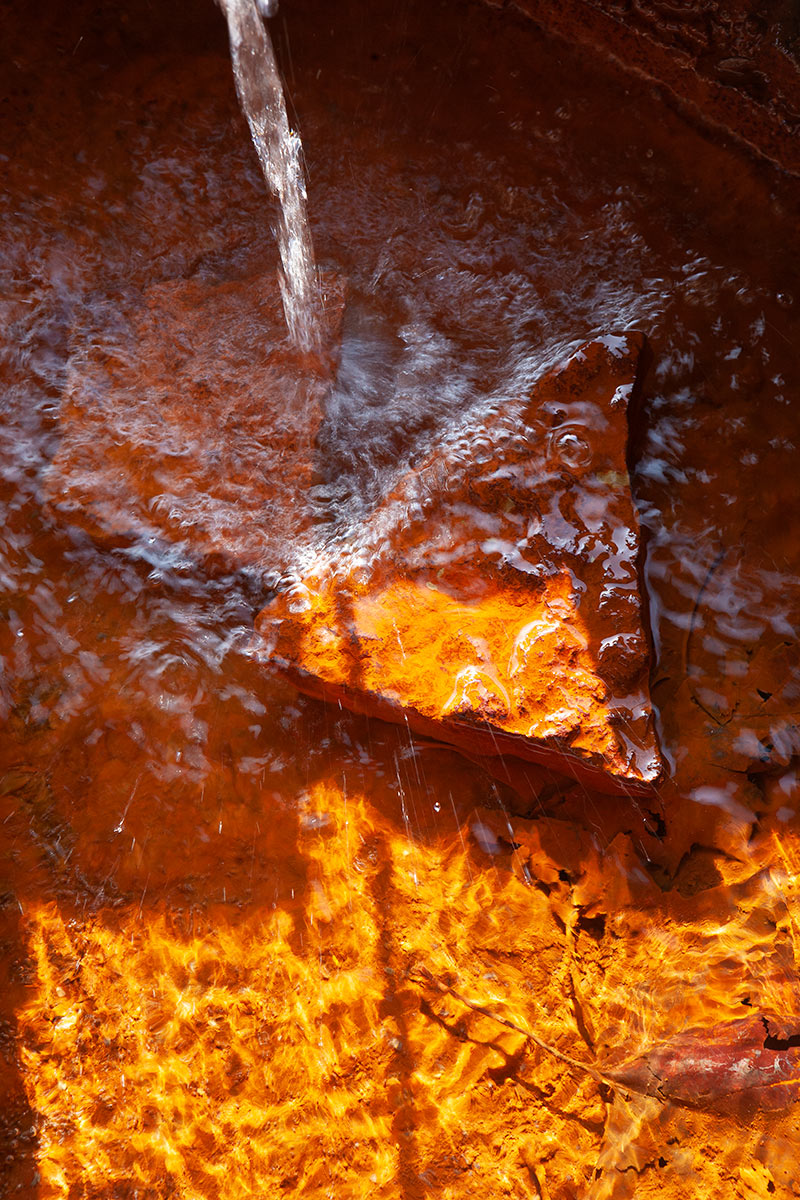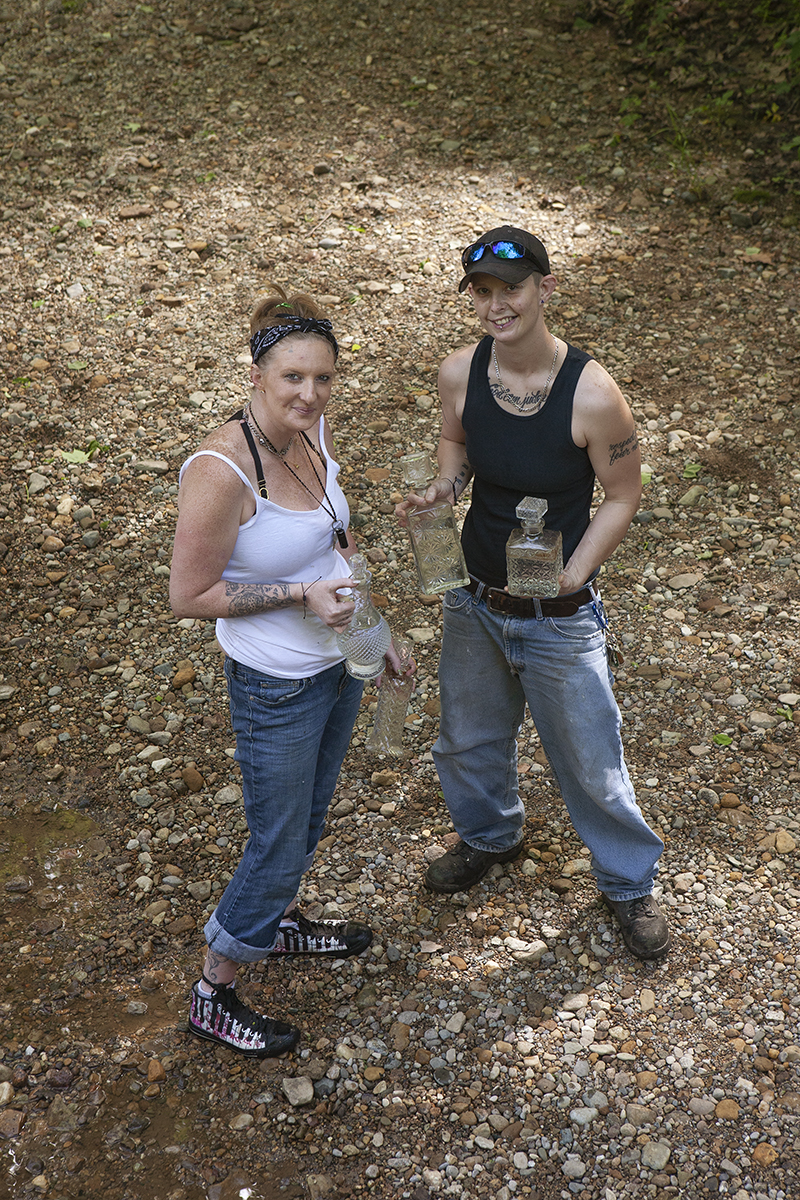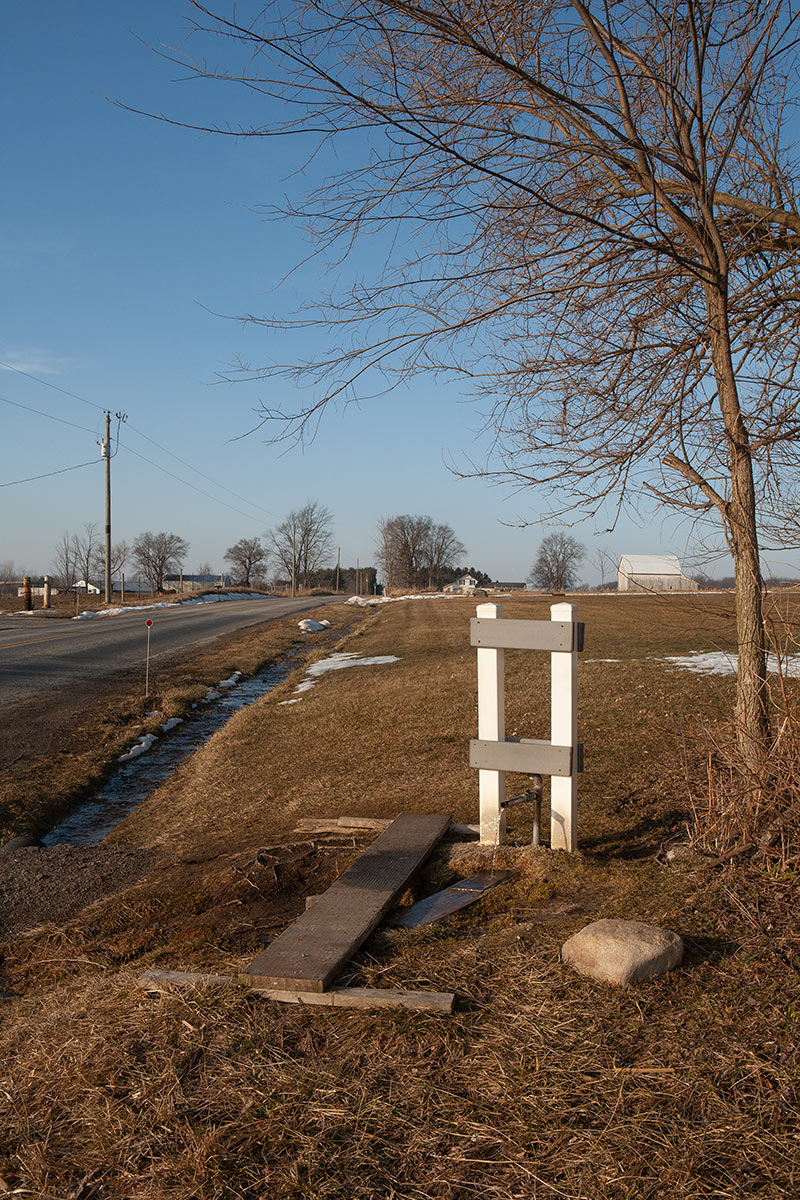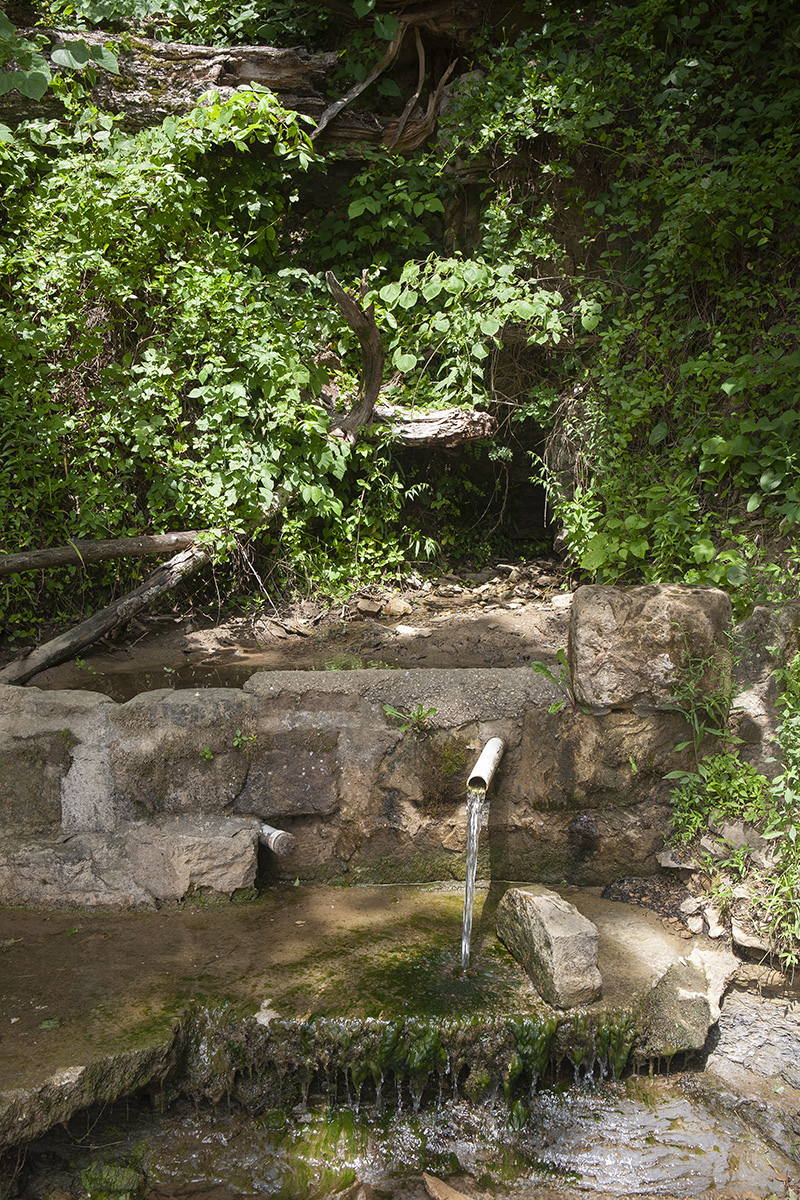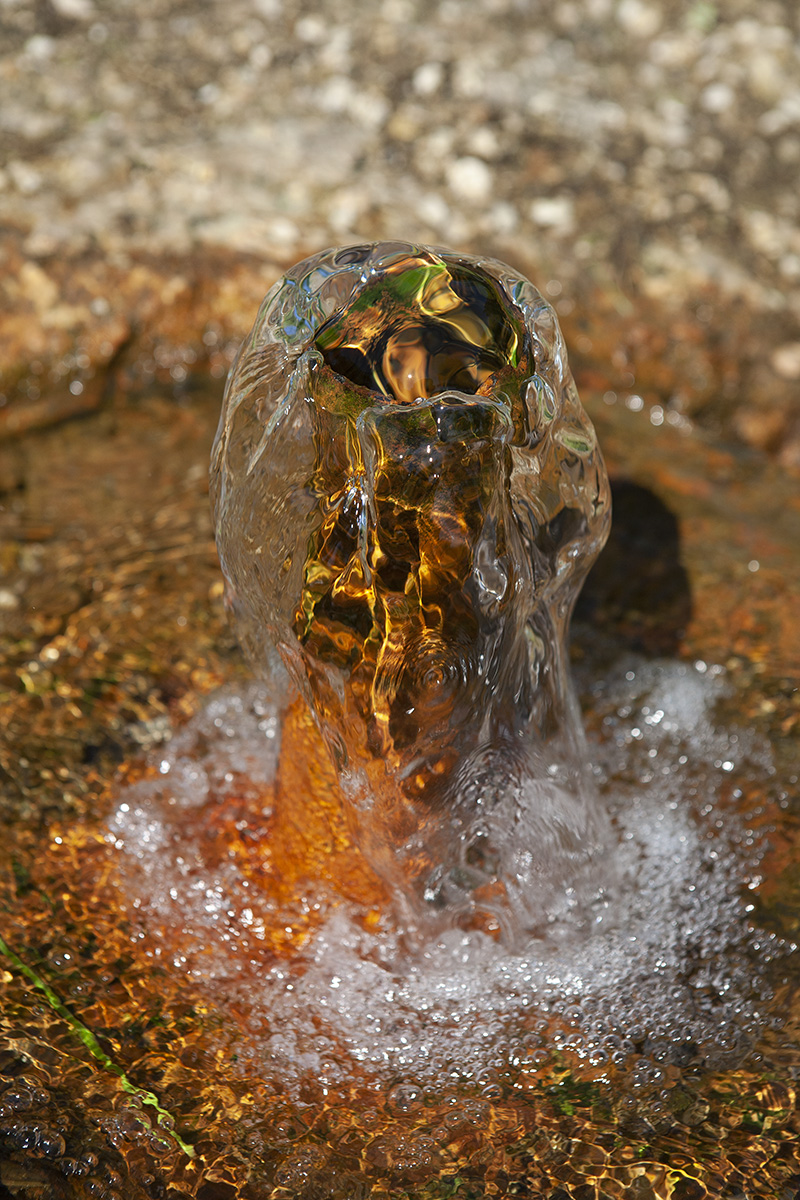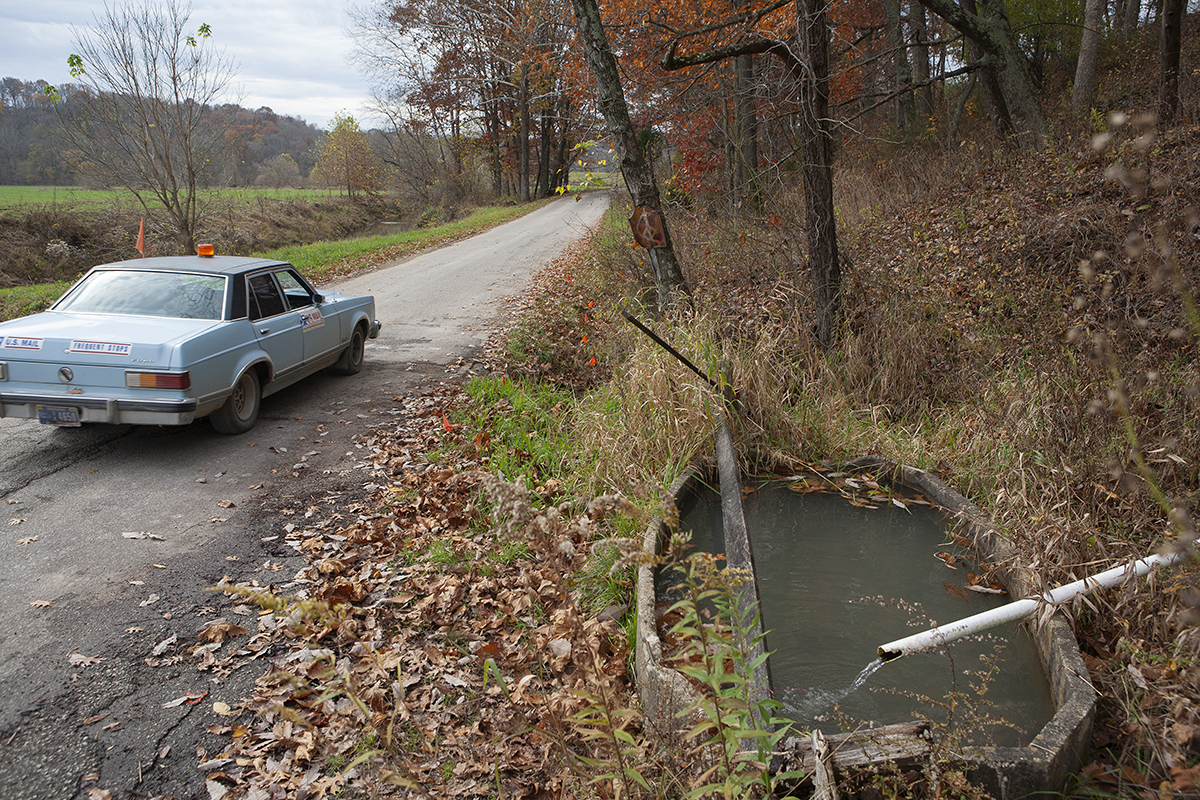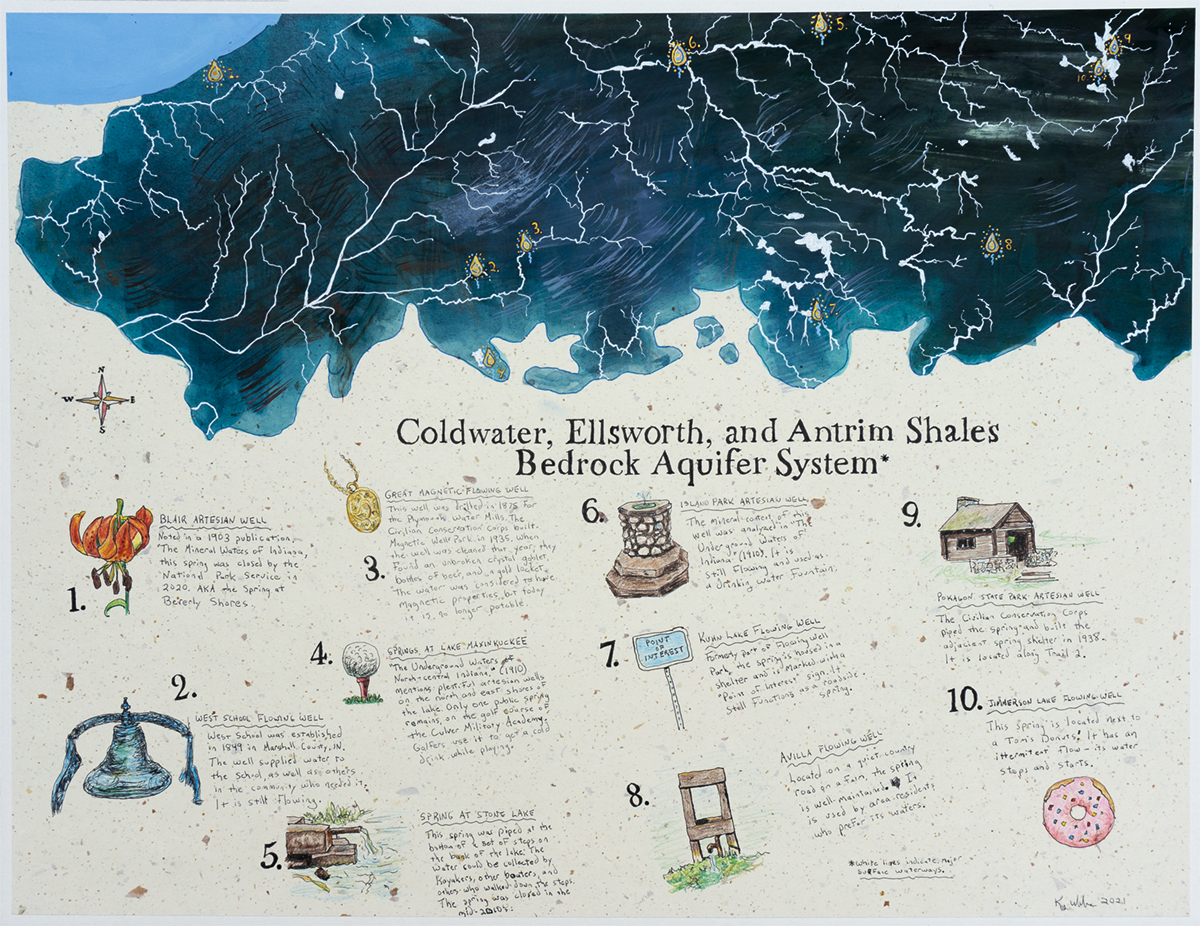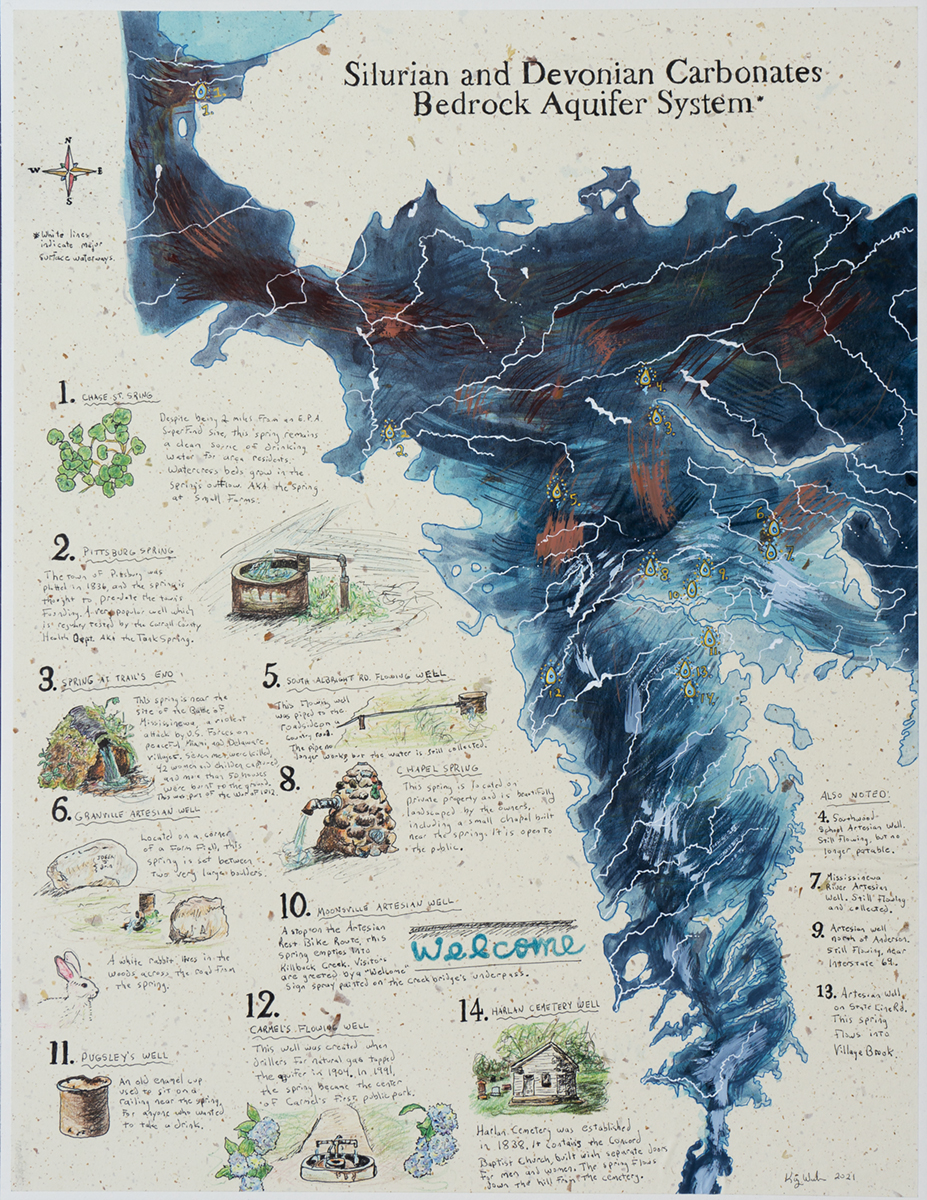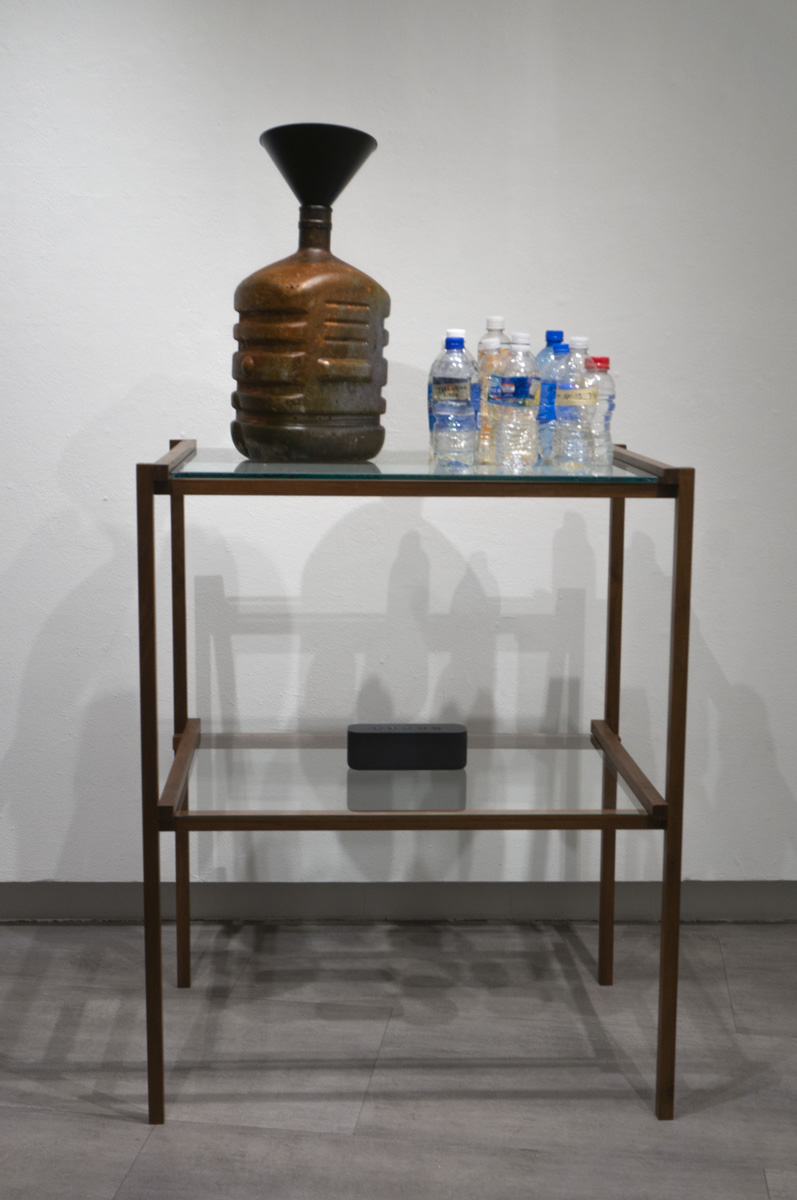A long-term exploration of roadside springs in the Midwest that are used as public water sources. This project is made possible, in part, with support from the Indiana Arts Commission and the National Endowment for the Arts. More images, video, and comments are on the project blog: www.wellstories.com.
audio file, 10:00
Water is thought by some to retain a memory of the substances it passes through. What might spring water remember on its journey through the aquifer to the earth’s surface?
Artist’s Statement
This work examines roadside springs in and near my home state of Indiana. Traditionally, these water sources functioned as part of the public commons, freely accessed by travelers or those in need before municipal water systems were available. Some springs have been flowing for over a century and have played a central role in colonialization and Western expansion. The state once contained hundreds of springs in the public commons; today only a few dozen provide a safe water supply. These are still visited by individuals who collect the water out of preference or necessity. They are sites where geography, history, public policy, and public health intersect.
Water Memory Table
Through my conversations with individuals who once used springs for their primary water source, I learned of a new definition of the term “water table.” These tables, which existed before the of advent of polythene plastic bottles, held the day’s drinking water, a washtub, and a dipper. Water was collected from the spring or well using a bucket, then brought indoors and set on the table. The dipper was used to drink the water, and if you did not drink it all, you would empty it into the washtub. This water was used for washing your hands. At the end of the day, the washtub water was used for watering plants.
I have recreated a water table to ask us to consider water and its relationship to memory. How often do we acknowledge the water we interact with everyday? As our physical connection to the source of our water diminishes, how does this affect our use of water? Our memories of it?
Visitors were invited to add water that they consider meaningful to the bottle on the table. The bottle, coated with iron from the spring water, was found discarded at a spring site. I asked that participants consider how the concepts of water as gift, water as resource, and water as commodity impacts our understanding of it. They could also leave a note explaining its personal significance. When the vessel was filled, the water was used to water the plants near the gallery.
